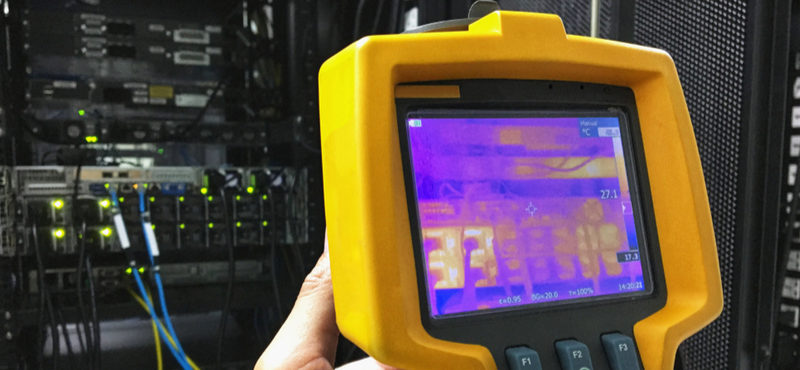Server rooms and closets are always at risk of overheating, especially during the hottest months of the year. Maintaining an appropriate temperature and humidity level is crucial to preventing serious technological difficulty.
Did you know that for every 10 degree increase in temperature in a server room, the life expectancy of the equipment decreases by half? Even worse, if the room becomes too hot, equipment may short circuit, break and/or lose valuable data. In the worst-case scenario, a fire may break out.
The optimal temperature for a server room is anywhere between 64.4- and 80.6-degrees F. Relative humidity should be between 35 to 50 percent.
Here are some tips to help prevent your server room from overheating.
7 Ways to Keep Your Server Room Cool All Year Long
#1. Don’t Leave Windows Open
It might seem like a good way to improve air-flow and prevent the room from overheating but doing so can actually be counterproductive by causing humidity levels to fluctuate. This will make it difficult to regulate server temperatures.
#2. Install a Fan
Instead of leaving windows open, using a ceiling or standing fan is a better way to improve airflow in a space. Keep in mind, a fan makes a room feel cooler by circulating air around, but it doesn’t actually do much to decrease the temperature in the room. Therefore, you’ll want to use a fan in conjunction with another type of supplemental cooling method, such as a spot cooler or central AC system.
#3. Utilize Cooling Racks
Place servers on cooling racks so that they get adequate air flow, this will reduce the risk that a server gets too hot.
#4. Keep Close Tabs on Temperature and Humidity
Have a system in place to alert you if the temperature or humidity gets too high in the room. This will allow you to act right away before there’s a chance that something goes wrong due to overheating or high humidity levels. If the temperature in your server room is often hitting higher than 80 degrees, you are putting the longevity of your equipment at risk.
#5. Design a Smart Server Room Layout
The layout of your server room can help prevent pockets of trapped hot air. The goal is for server racks to push hot air in different directions from the cold air intake. Usually, this entails placing the fronts of the racks so they face one another and draw cold air from the cold aisle. In addition, place the rear sides of the rows of racks so they face one another, pushing hot air into the hot aisle.
Place blanking panels in unused parts of your rack. If there aren’t any blanking panels, hot air gets trapped and the effectiveness of your cooling system is reduced.
#6. Seal Off the Server Room
Keep your server room sealed off from the rest of the building. In addition, make sure the server room is only for storing servers and technical equipment – nothing else. Adding more things to the room will force the AC to work harder to push cold air around.
#7. Get Rid of Heat Emitting Lights
Lights that produce heat, or any equipment that is not necessary and produces heat, should be removed from the server room. The servers themselves produce a lot of heat and so you do not want to create any more.
Rent or Buy a Spot Cooler from Cooling Power
Central AC isn’t always effective at cooling a server room because the demands of that room are completely different from other parts of the building controlled by the same central unit. This is where supplemental cooling comes into play.
Let us help you find the right spot cooler, water-cooled or air-cooled, to maintain the right temperature and humidity levels year-round. We offer a wide selection of cooling options – learn more or contact us today with questions or to get a quote.

